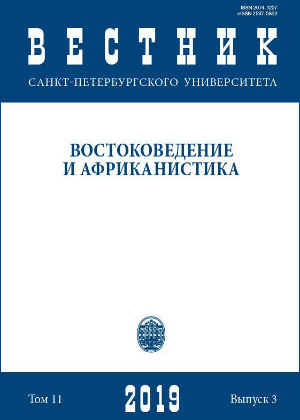The History of the Andijan Branch of the Russian-Asian Commercial Bank
DOI:
https://doi.org/10.21638/spbu13.2019.301Abstract
The article deals with the fundamentals of the activity and functions of the Andizhan branch of the Russian-Asian commercial bank (1910–1917) in Turkestan general-governship. In Soviet historiography, banks were understood as an instrument of colonialism, both Western and Russian. The author, based on archival data, proves that the financial institutions of the Russian Empire took into account local specifics and encouraged the production of exportoriented products. The author actively uses interbank correspondence, annual reports of the branch director, as well as audit materials of the Andizhan branch. For the first time in historiography, active and passive operations of the bank were investigated, the expenses and profits of the bank were analyzed, and the bank’s staff was studied. The author, unlike Soviet and post-Soviet researchers, believes that banks have not become monopolies in the economy of Central Asia. The largest Russian bank in the region that had an extensive branch network (13 branches) throughout Central Asia was the Russian-Asian Commercial Bank (until 1910 the Russian-Chinese Bank). It should be noted that the Russian-Asian Bank was trying to take control of cotton production and industrial production. But in the end, the bank failed to become the locomotive of the region’s economic development. The main reason, according to the author, is the adaptation by the bank to the really existing economic relations in the Turkestan general-governorship and the khanates. The modernization of the Central Asian economy in the understanding of banks was to finance export crops and to mediate between the metropolis and the periphery. Colonial periphery at first glance seemed an attractive area
for investing and receiving superprofits, but the speculative nature of the Turkestan economy prevented the normal development of banks. As a result, the economic modernization of Central Asia slowed and opened the way for the Soviet experiment.
Keywords:
Andizhan, Ferghana, Russian Empire, Central Asia, Turkestan, Russian-Asian Bank, deposits, promissory note
Downloads
References
Downloads
Published
How to Cite
Issue
Section
License
Articles of "Vestnik of Saint Petersburg University. Asian and African Studies" are open access distributed under the terms of the License Agreement with Saint Petersburg State University, which permits to the authors unrestricted distribution and self-archiving free of charge.





